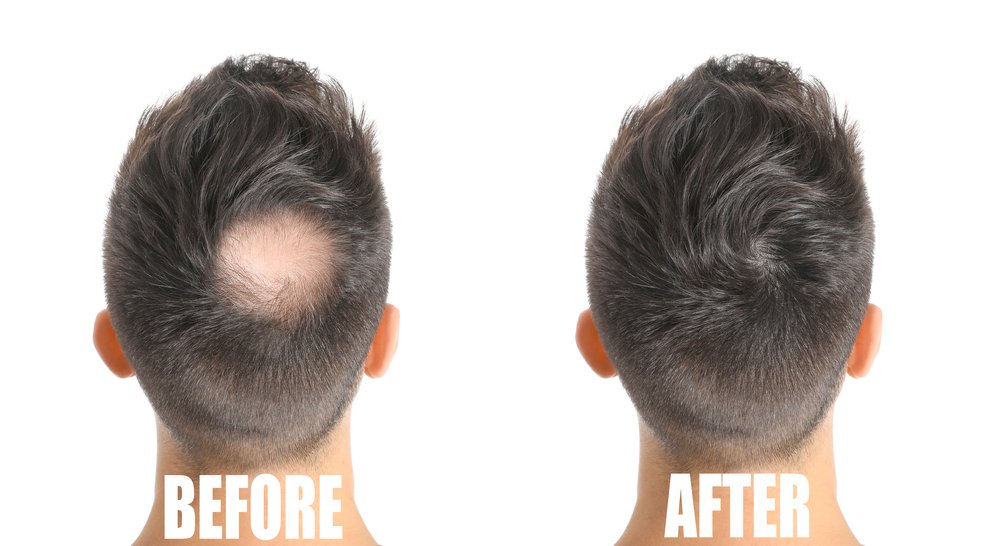
Hair loss is a problem that both men and women will have to face as they age. It can have a dramatic effect on your self-esteem and cause anxiety in social situations. The good news is there is hair loss treatments available today that slows the progression of hair loss and even promotes regrowth to restore your hair, giving you back full healthy hair strands. There are noninvasive, non-surgical, and surgical options, so there is something to meet everyone’s needs.
The Role of DHT in Hair Loss
To understand how these treatments work, it’s important to know what causes hair loss. 70% of men and 40% of women experience some degree of hair loss in their lifetime. It can occur at any stage of life, even in the early 20s, and can be caused by a number of different factors, including genetics, nutritional deficiencies, hormonal imbalances, illness, scalp infections, and stress.
Genetics is the most common cause of hair loss. Certain genetic factors make some people more sensitive to the effects of the hormone dihydrotestosterone or DHT, and levels tend to increase as we age. Exposure to DHT causes hair follicles to shrink in essence. They get thinner and shorter with each growth cycle, until eventually the hairs stop growing altogether. This type of hair loss is known as male and female androgenetic alopecia.
The good news is that not all hair follicles are sensitive to DHT. Hair follicles on the sides and back of the head are resistant to this hormone. This is the part of the scalp where donor follicles are collected for transplant. Because they are resistant to DHT, they will continue to grow in their previously hairless place even in their new home. Hair transplantation is the most successful hair restoration method in the treatment of androgenetic alopecia.
Two Types of Hair Transplantation
Hair transplantation has been around since the 1950s and since then, great advances have been made in technology and technique. The original plantations looked unnatural, like the tresses of a doll’s hair. Today there are two main types of hair transplantation – FUT and FUE.
FUT transplant planThis is an older method that involves harvesting a strip of donor follicles from the back of the head and then separating, separating and transplanting it into the balding area. This transplant results in natural looking hair growth in the transplanted area. The only downside is that because a strip of follicle is removed, there will be a linear scar on the back of the scalp. This scar is subtle and easily concealed by longer hair, but it can be visible if you like to use your hair very short.
FUE transplant The method removes the grafts to be transplanted into balding areas one by one. This means there are no easily visible scars and your hair can be worn much shorter. Due to the careful precision of this procedure, it takes more time than other transplant methods, but the recovery time is usually faster.
Hair transplantation is not the best option for everyone and may not be the first treatment option you should consider. They are best suited for men and women with genetic male or female pattern baldness. There are other causes of hair loss that may be more suitable for another treatment option.
Other Hair Loss Treatment Options
topical products are traditional first-line treatments used to slow the progression of hair loss and encourage regrowth. products like HRI’s Advanced 5% Topical Minoxidil and DHT blocking shampoos To treat hair loss in its early stages, go straight to the source.
Low Level Laser Light Therapy (LLHT) It uses laser light energy from wearable devices such as HairMax PowerFlex Laser Head 272 to stop the progression of hair loss in 93% of those treated. It stimulates hair follicles to promote new growth resulting in thicker, stronger and healthier hair. It even accelerates recovery after a hair transplant and improves the texture and thickness of the transplanted hair.
Platelet-Rich Plasma (PRP) Treatment It is a minimally invasive procedure that uses your own platelets and plasma. When injected into your scalp, it stimulates the stem cells inside the hair follicles to start new growth. PRP therapy can be a stand-alone treatment or used in conjunction with other treatments such as transplants and LLHT to improve outcome.
Scalp Micropigmentation It uses tiny needles to deposit pigment on the scalp to mimic your own natural hair follicles. Fills bald spots with color to give the appearance of fuller hair. Scalp micropigmentation can also be used after FUT transplant surgery to help hide scarring in the donor area.
Proper nutrition, plenty of sleep, reducing stress and treating chronic diseases can help certain types of hair loss caused by these factors, but if hair loss cannot be prevented, it is time to consult a hair loss specialist. Hair Transplantation Institute. We will assess your hair and scalp health, as well as the cause and extent of your hair loss, and then discuss the best available treatment options to restore your hair. Call us at 612-588-HAIR (4247) for your discreet and private free consultation. You can find us in Bloomington, MN at 8030 Old Cedar Ave S Ste 202.